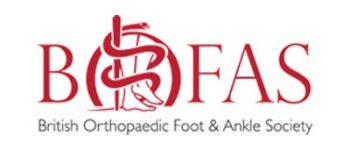About Claw Toe
Claw toe is a condition which is characterised by the toes bending into a shape similar to a claw. It usually develops over time. Claw toe can be an incredibly uncomfortable condition, causing significant pain and swelling around parts of the toe. It is important that claw toe is diagnosed and treated, to prevent it from worsening.
Causes
In some cases, the direct cause of claw toe isn’t known, but it can arise from multiple conditions. Claw toe can develop after an injury to the ankle, or ankle surgery, which has caused nerve damage or inflammation, leading to the toes becoming bent.
There are also a number of disorders which can cause claw foot, including cerebral palsy, rheumatoid arthritis, Charcot-Marie-Tooth disease, diabetes, and a stroke.
Symptoms
The predominant symptom of claw toe is the ‘claw like’ position of the toes; this involves the toe joints which are closest to the ankle pointing up, with the other toe joints pointing down.
Claw toe can cause pain, as well as the development of ulcers, corns and calluses, due to the rubbing of the foot against shoes. However, in other cases, claw toe does not cause painful symptoms.

Treatment
Claw toe is initially treated by non-surgical methods. The wearing of a splint, or the taping of the toes, can be advised, in order to hold them in the correct position.
Physical exercises, which can be performed at home, can be recommended, in order to prevent the condition from getting worse, and address symptoms. This routine can include using the hands to help flex the toes to their natural position. Exercises which involve the picking up of items using the toes have also proven to be effective. Objects used for this purpose can include crumpled towels, or marbles.
Depending on the nature of your condition, you could be advised to avoid certain shoes, and be recommended specific alternatives. As a general rule, shoes which offer your feet plenty of space can help to reduce discomfort. Tight shoes and high heels are usually advised against. Wearing shoes with a toe box which offers plenty of room can be especially important when considering shoe type. In some cases, a pad can be used to help take pressure away from the ball of the foot, effectively redistributing weight around the foot.
Self-care can help to improve symptoms, particularly for individuals who still have a large degree of flexibility in the toes. In cases where the treatments outlined above have proven ineffective, your doctor can recommend surgery. Surgical treatments typically focus on shortening the bone located at the toe’s base, and straightening the bones in the toe. There are many ways of doing this, the most common being to use a small temporary wire while the toes heal. Recovery from surgery usually takes no more than six to eight weeks.










